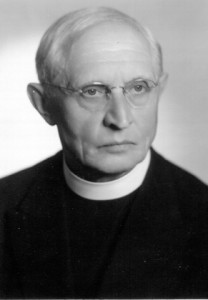Martin Gusinde was born in Wroclaw (Breslau) in 1886. After joining the Society of the Divine Word (SVD) and finishing his high school years in Nysa/Silesia, Gusinde took up his philosophical and theological studies at St.Gabriel in Mödling near Vienna in 1905.
In 1911 Gusinde was ordained a priest. A year later he went to Chile, where he taught Natural Sciences at an advanced high school. Moreover, Gusinde took up a trainee position at the Museo Histórico de Chile in 1913. Five years later he became the director of a department at this museum.
In 1917 Gusinde was appointed professor of Anthropology at the Catholic University of Chile. Throughout the following years he did several research trips, for example among the Arawak people in Southern Chile and the ethnic groups of the Tierra del Fuego region.
In 1924 Gusinde returned to Europe. Two years later the received his Ph D in Ethnology, Physical Anthropology and Prehistory. Moreover, Gusinde worked at the Lateran Museum in Rome. In 1928/29 he did further researches, this time among several ethnic groups in Northern America. Together with Paul Schebesta he also did researches in Congo.
After being announced professor at the Catholic University of America in Washington, D.C., in 1949, Gusinde did research among the ethnic groups of the Kalahari desert between 1950 and 1953. Furthermore, Gusinde collected ethnographic material among the Yupa people, who lived at the border region between Venezuala and Columbia.
After being invited for lectureship at the Catholic University in Japan in 1955, Gusinde also visited the Philippines and Papa New Guinea. In 1959 Gusinde held further lectures in Japan.
In 1961 he returned to St. Gabriel, where he died in 1969.
Gusindes major work concerns the ethnic groups of the Tierra del Fuego. He published a number of ethnographies about them and documented their lifes by taking more than 1000 photographs. Since these people became victims of colonization, Gusindes books and photos became an important contribution to saving some of their cultural heritage.
(Text based on information provided by the Anthropos Institute; photograph by courtesy of J.Piepke/Anthropos-Institute)
Short Portrait: Martin Gusinde

Martin Gusinde
 further information
further information

